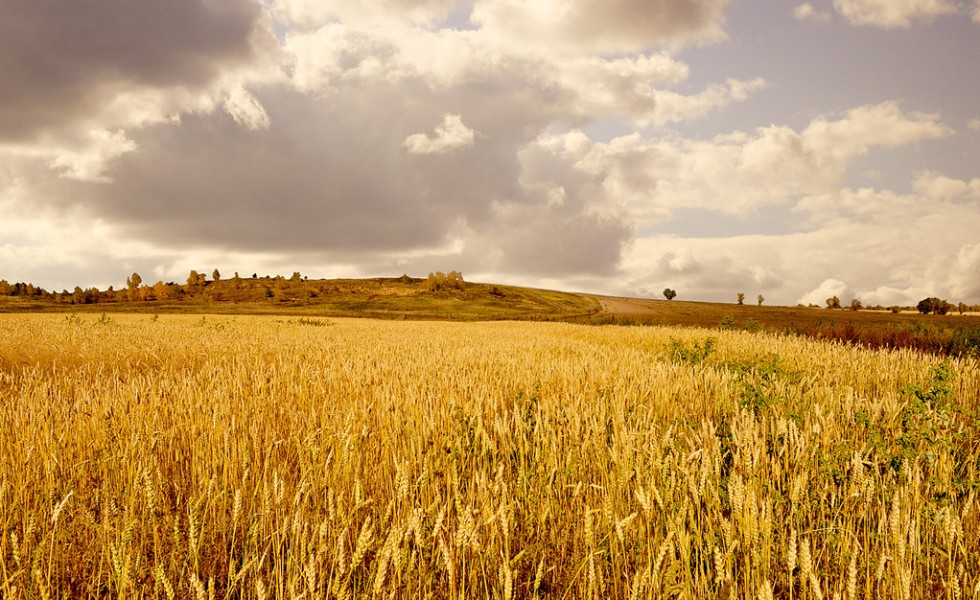Hold the Sickle, CRP Needs a New, Bigger Hammer
Posted on September 23, 2021

To say the U.S. Department of Agriculture’s (USDA) biggest environmental program, the Conservation Reserve Program, or CRP, is at a crossroads is like saying climate change might be a problem.
After all, the phrase “climate change” understates today’s dilemma until, for example, you learn that 47 percent of the continental U.S. is now in drought, 2.7 million acres of the West have burned this year, and the 8 percent of the U.S. economy built on the flow of Colorado River is drying up faster than, well, the flow of the Colorado River.
So, yeah, climate change is a problem.
Equally problematic is USDA’s biggest, best hammer to make a dent in it, CRP, because it, too, is shrinking even as the challenge of climate change grows.
The numbers prove it. The latest CRP general sign-up period that ended earlier this summer lured in only 2.8 million acres of the 4 million acres the Biden Administration hoped to attract. Worse, that shortfall will be magnified when CRP contracts expire on an estimated 3 million acres later this month.
That means CRP’s total acres likely will drop below today’s 20.6 million, already the lowest total since the program’s debut enrollment period in 1986/87.
The drop has been intentional. Ten years ago, during its 25th anniversary year, CRP held 31 million acres after reaching an all-time high of 37 million acres. Thereafter, however, Congress began to cut CRP’s acreage caps.
The big cuts came after 2014 when that year’s contentious Farm Bill fight–already two years behind schedule–took a cleaver to CRP funding. The House Ag Committee, then led by long-time Republican Frank Lucas of Oklahoma, hacked the cap from 32 million acres to 24 million acres.
The 2018 Farm Bill modestly reversed: CRP caps will rise to 25.5 million acres in 2022 and 27 million acres in 2023.
Still, if USDA doesn’t promote and Congress doesn’t fund CRP–and the Sonny Perdue-led agency and its Big Ag allies had no interest in doing either–its impact on soil and water conservation will continue to drop.
So, too, will its impact on climate change. For example, during the most recent enrollment period, the White House claimed that current CRP acres “mitigate more than 12 million metric tons of carbon dioxide equivalent.”
And, it added, that its 2021 goal of adding 4 million acres–it got 3 million–would “mitigate” another “3 million tons” while preventing “90 million pounds of nitrogen and 33 millioin metric tons of sediment from running into our waterways each year.”
Total cost? A bargain by any conservation measure: $2 billion in 2021.
Despite its 35-year record of provable benefits, CRP remains underused and underfunded. Its biggest headwinds, ag’s full-time climate deniers and Congress’s part-time deficit hawks, continue to throw up “feed-the-world” roadblocks anytime anyone mentions a return to pre-2018 acreages.
Worse, in recent years, some farm groups have added a new one: that expanding CRP takes land from beginning farmers. Like most anti-CRP arguments, this one comes with a large side order of baloney. The 2018 Farm Bill included the Transition Incentive Program (and $50 million) to address any harm CRP might cause beginning farmers.
A bigger problem for expansion now, however, is today’s profitable commodity prices. With corn and soybean harvest prices over $4 and $12 per bushel, respectively, USDA literally can’t buy new CRP acres for love nor money.
Which strongly suggests that for CRP to have an important role in climate change mitigation in the next 35 years, it will need a massive refocus of its goals and billions more to underwrite the chance to reach any.
The best chance to do both is the coming month when members of Congress’s ag committees divvy up $135 billion–ag’s share of the $3.5 trillion budget reconciliation bill–in new ag spending for the coming decade.
As such, Congress likely has the money and the votes to make a real, lasting difference. Now all it needs is the courage to swing a bigger hammer.
© 2021 ag comm
Share This